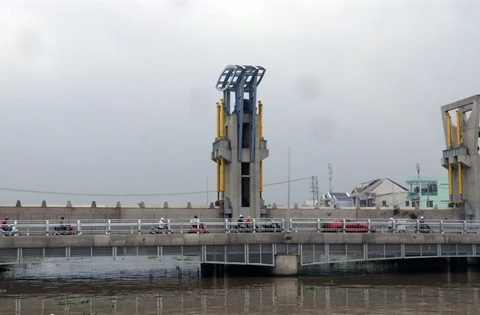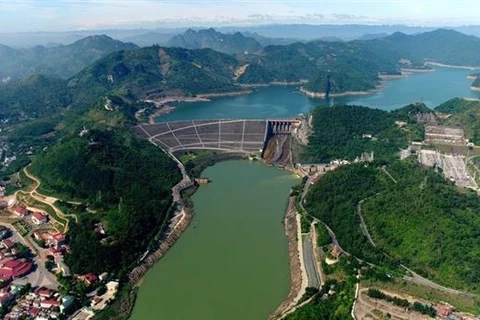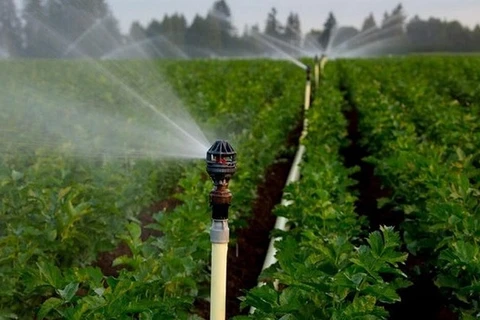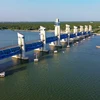 A resident in Ea Nuoi commune, Dak Lak province’s Buon Don District, collects clean water for daily life. (Photo: VNA)
A resident in Ea Nuoi commune, Dak Lak province’s Buon Don District, collects clean water for daily life. (Photo: VNA) Hanoi (VNA) – The excessive exploitation of groundwater in many areas has led to serious deterioration, land subsidence, and the risk of depletion of water resources, according to experts.
The theme of this year’s World Water Day is “Groundwater-Making the invisible visible”, which highlighted the importance of groundwater as well as its role in the ecosystem and climate change adaptation.
Studies conducted by the National Centre for Water Resources Planning and Investigation (NCWRPI) under Ministry of Natural Resources and Environment (MONRE) showed that the level of underground water has decreased at all measured locations, especially in the dry season in coastal provinces such as Ca Mau, Bac Lieu, Soc Trang, Tra Vinh, and Ben Tre provinces. As a result, land subsidence is occurring in the Mekong Delta.
The over-extraction of underground water in large quantities and at high density has also reduced the resources, leading to an increase in the number of extraction wells, irrigation costs and a decline in productivity.
In Ben Tre province, one of the most severe drought and salinity hit areas in the Mekong Delta, the illegal drilling of wells takes place in many areas, especially in communes engaged in planting durian and rambutan including Tien Long, Tien Thuy, Phu Tuc and Tan Phu. It has seriously affected groundwater resources in the locality.
Despite the fact that Ca Mau province has 180,000 underground wells, up to 20 percent of its population doesn’t have access to clean water.
Associate Professor Ha Quang Khai, from the Faculty of Environment and Natural Resources under University of Science and Technology (UST)-Vietnam National University, Ho Chi Minh city, said the amount of groundwater exploitation in the city has increased since 2000. Up to 700,000 cubic metres of groundwater is exploited in the southern metropolis every day.
HCM City experiences an average subsidence rate of 4 centimeters a year, partly due to rampant groundwater exploitation.
Many studies by the UST pointed out that groundwater exploitation has led to water contamination and saltwater intrusion in many districts such as Cu Chi, Hoc Mon, Nha Be and Binh Chanh.
According to Le Anh Tuan, an advisor of Can Tho University’s Research Institute for Climate Change, said there has been an alarming increase in the use of groundwater in many places over the past few years, especially in the context of sea level rise, the impact of reducing water resources in the Mekong River and the increasing demand of water for daily life and production.
To improve groundwater management, it is necessary for big metropolises to restrict the extraction of underground water in areas at risk of saline intrusion, he said.
Tuan suggested that coastal areas should have a plan for safe water exploitation to reduce the rate of saltwater intrusion along with storing freshwater, saving water usage and restructuring agricultural production.
Trieu Duc Huy, Deputy Director of NCWRPI, said the Mekong Delta region should urgently complete the formulation of a master plan on the basis of reviewing planning of sectors and localities, especially those for irrigation, agriculture, aquaculture and water supply, taking water resources as a core factor.
It is a must for the delta to enhance its role in coordinating and supervising water resources exploitation as well as protecting the resources and dealing with its consequences, he said.
Meanwhile, Deputy Director of the Department of Water Resources Management Nguyen Minh Khuyen under MONRE proposed that localities should adjust the exploitation of underground water, ensuring that the total extraction volume does not exceed the safe exploitation limit to prevent a decline in groundwater quality./.























